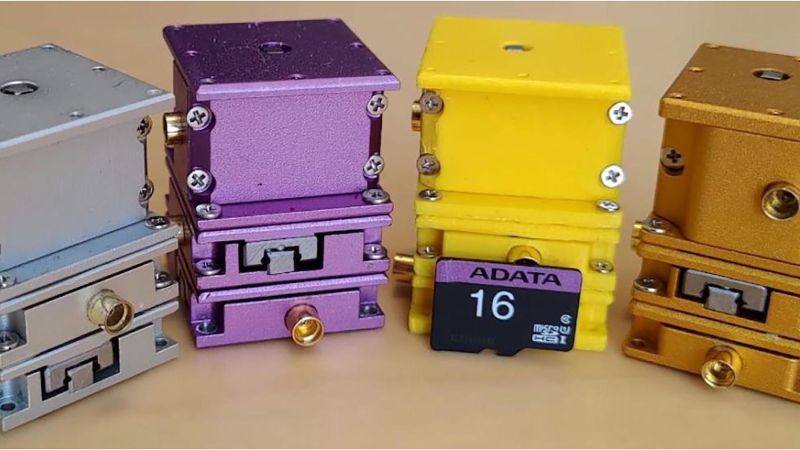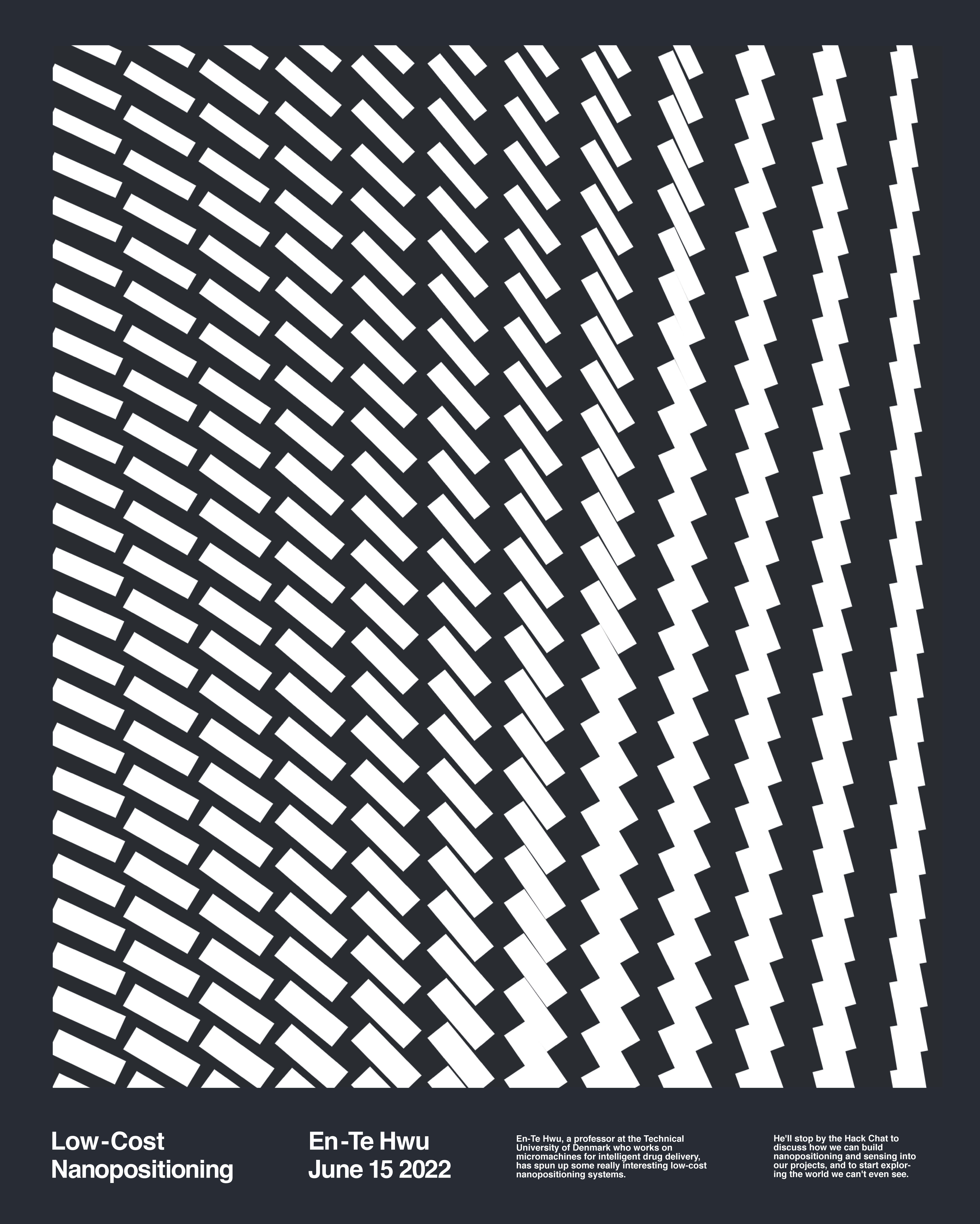Join us on Wednesday, June 15 at noon Pacific for the Low-Cost Nanopositioning Hack Chat with En-Te Hwu!
It may sound like a provocative statement to make, but technology has been on a downward trend for a long time. That’s not a moral or ethical proclamation, but rather an observation about the scale of technology. Where once the height of technology was something like a water-powered mill, whose smallest parts were the size of a human hand and tolerances were measured in inches, today we routinely build machines by etching silicon chips with features measured in nanometers, look inside the smallest of cells and manipulate their innards, and use microscopes that can visualize materials at the atomic level.
The world has gotten much, much smaller lately, and operating on that scale requires thinking about motion in a different way than we’ve been used to. Being able to move things at nanometer resolutions isn’t easy, but it’s not impossible, and it can even be accomplished on a DIYer’s budget — if you know what you’re doing.
 To help us sort through the realities of nano-scale positioning, En-Te Hwu, a professor at the Technical University of Denmark who works on micromachines for intelligent drug delivery, has spun up some really interesting low-cost nanopositioning systems. Using old DVD players or off-the-shelf linear slides, he’s able to achieve nanoscale movement and sensing for a variety of purposes. He’ll stop by the Hack Chat to discuss how we can build nanopositioning and sensing into our projects, and to start exploring the world we can’t even see.
To help us sort through the realities of nano-scale positioning, En-Te Hwu, a professor at the Technical University of Denmark who works on micromachines for intelligent drug delivery, has spun up some really interesting low-cost nanopositioning systems. Using old DVD players or off-the-shelf linear slides, he’s able to achieve nanoscale movement and sensing for a variety of purposes. He’ll stop by the Hack Chat to discuss how we can build nanopositioning and sensing into our projects, and to start exploring the world we can’t even see.
Our Hack Chats are live community events in the Hackaday.io Hack Chat group messaging. This week we’ll be sitting down on Wednesday, June 15 at 12:00 PM Pacific time. If time zones have you tied up, we have a handy time zone converter.
Featured image: Low-cost, open-source XYZ nanopositioner for high-precision analytical applications, CC-BY-4.0

















That’s a really nifty mechanism. With a 12kg capacity in xy and 50g in z (and higher voltage requirements for a given step size relative to XY), I’d imagine many applications would simply drop the Z piezo-stepper. Looking at the variation table at the bottom, it seems many do exactly that, and there are some fun applications with much longer travels than the 12mm in the headlining mechanism.
Nano position has my interest as I work with decapped chips fairly often. This research is very interesting to read about the research. It’s great the plans are opensource, even though it took a while to find the source, and then a longer to understand the plans and differences between the models.
Currently I don’t have the time to invest in building an XY stage as shown in the top image, but now I know it exists and can build one in the future, hoping by then there will be a kit.
https://openflexure.org/ has some content on the topic of 3-d printed microscope stage components.
I’m not comprehending this gizmo. Not enough coffee? Not enough info? Is it an piezo inch-worm type movement? Something is wrong with my jargon today. Is “Stick-slip” the same as “cabbage crates over the briney”?
Right in the ‘how’s your father’.
Stick slip effect is when two rigid bodies are moved against each other, and they alternate between sticking (strong friction) and slipping (overcoming friction).
also known as Stiction, the static friction that has to be overcome before two surfaces can slide agaisnt each other at the lower dynamic friction. (it’s The Devil Himself in joystick design…)